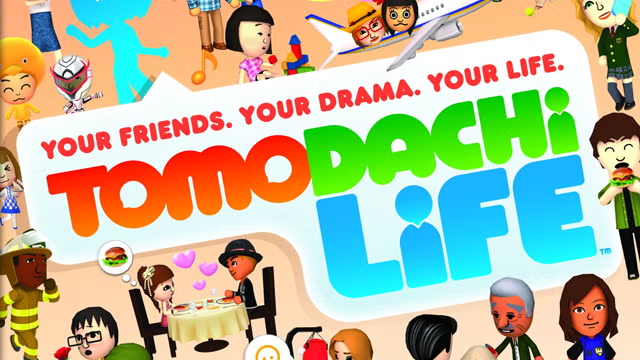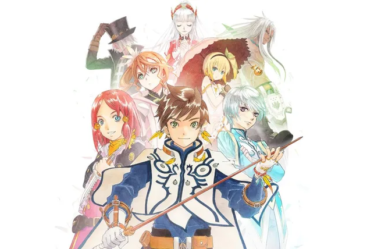
This article was originally published in Italian on Games969.com in 2014.
After a long localization process that lasted about a year, Tomodachi Life, the sequel to a DS title never released in the West due to technical issues related to the software’s unique features, arrives on Western Nintendo 3DS consoles. Developed by Nintendo SPD Group 1, a very young internal team from the renowned Kyoto-based company, the game blends elements of a quick, casual experience like Animal Crossing with a collection of mini-games, centering its appeal around the inherent charm of Mii characters—3D avatars introduced by Nintendo with the release of the Wii.
Tomodachi is not a term coined by Nintendo to describe the characters in its latest game, but simply the Japanese word for “Friend(s),” a concept around which the game’s design revolves. The player takes on the role of the owner of an island, where they can place their Mii and create a social network within the small community. The interactions between these characters, all residents of a large building, are driven by the player’s choices, otherwise, the characters will just pass the time playing or following their assigned routines.
Each resident can be customized through an editor slightly more complex and varied than the one used for creating Mii characters. This editor allows the player to specify the character’s name, surname, nickname, and basic personality traits. Mii characters with similar personalities will be more likely to become friends, spend time together, or even fall in love and procreate, while Mii characters with contrasting traits may end up arguing and creating tension in existing relationships. With this setup, the game takes on the characteristics of a small social simulator, but in reality, the simulation aspect of Tomodachi Life serves more as a backdrop for short, humorous 3D skits. If the player wishes, real-life Mii characters can be the stars of these sketches. Clearly, the main appeal lies in lightheartedly portraying the mundane aspects of everyday life—tedious tasks and complicated relationships—in a much lighter, stylized context.
Unfortunately, despite allowing players to define various aspects of the islanders, such as their relation to the player, sex, or age, the game overlooks much of this detail, often resulting in improbable romantic pairings between elderly characters and much younger ones, or limiting the experience to a purely heterosexual sphere. This might actually be a good thing, as we shudder to think how a title with such a surreal atmosphere as Tomodachi Life would have handled same-sex relationships, especially considering how the subject is often oversimplified in other video games—take, for instance, the entire line of Bioware RPGs.
Essentially, don’t expect the game to even attempt to follow the path of a simulation, where the graphical style itself immediately suggests the specific way Nintendo has chosen to characterize its own vision of Life-Simulator games, following in the footsteps of The Sims.
Leaving aside the amusing—but somewhat flimsy—simulation element, the game forces the player to juggle multiple menus on the lower screen of the Nintendo 3DS, looking for solutions to the numerous—but not very varied—problems faced by the island’s inhabitants, often related to food shortages, desires to change clothes or home furnishings, and so on. By satisfying the Mii characters’ needs, they will become happier, and their level will rise, unlocking more possible interactions and increasing the player’s budget. Every day, the player receives donations from the residents based on their well-being and the gratitude they feel toward the player.
However, even in this regard, there are no real penalties for ignoring the residents’ issues, as they cannot die or leave the island unless explicitly requested by the player. The real issue with Tomodachi Life is that, while the simplicity of the “life simulator” component is forgivable, if not enjoyable, the game’s core mechanics are practically nonexistent, relegating the product to a mere toy to mess around with at first, until it becomes clear that there is no sense of progression, no real purpose, and the game’s appeal isn’t as striking as its promotional material might have led you to believe.
The impression is that, like other games with less flair but similar gameplay traits, Tomodachi Life falters in terms of gameplay, making it almost incomprehensible that it is sold at the same price as other Nintendo 3DS games when it could have easily been offered pre-installed on the console or sold at a much lower price.
Collecting all the items, costumes, foods, and countless collectibles on display in the game cannot and should not be the only true offering of a video game in 2014. The initial wonder of seeing your Mii characters come to life, interact, marry, and have children will soon give way to incredulity when confronted with the lack of evolution beyond the humorous skits and the attraction of the Mii aesthetic.
The multiplayer component has been completely overlooked, allowing players to exchange items, residents (but not all of their characteristics), and… exportable goods. Each island can export certain types of items, and depending on whether SpotPass or StreetPass is chosen, players can encounter merchant ships that make these items available in their import shops. Nintendo also announced that for a limited time, it will offer exclusive downloadable items for Tomodachi Life, likely to encourage early adopters.
Technically, Tomodachi Life is delightful and boasts an enviable style, especially considering the popularity of Mii characters and their cross-generational appeal. In addition to the customizable characters, the 3DS title features several well-crafted 3D environments and a series of 2D illustrations depicting food and objects. The music and sound effects effectively recreate the mellow—and unusual—atmosphere of an island inhabited by super-deformed 3D avatars, but without a doubt, the real standout feature is the built-in voice synthesizer, which allows the player to make the islanders say anything, adjusting their accent, speed, or pitch. I must admit that without this feature, the game would lose much of its charm, especially the humor, and it seems this very element was responsible for the localization delay of the previous chapter. Hopefully, this ensures greater presence of the brand in the West moving forward.
During the game, it’s not possible to explore environments, only to passively watch pre-calculated animations from the developers with no interactive options. In this regard, dreams and mini-games offer one of the few gameplay variations, where the player must answer short questions or briefly interact with the Mii character in the sequence via the lower touch screen of the Nintendo handheld. Aside from that, while the music and sound ensemble is enjoyable and helps immerse the player in the surreal world of the game, don’t expect any real surprises. The only way Tomodachi Life will impress you is through its recurring gags or the rapid realization that there’s not much to do other than be amused occasionally—if you’re familiar with most of the clichés and setups that drive the many absurd situations presented in Nintendo’s latest creation, much more familiar to a Japanese audience than to ours.
Tomodachi Life is an essential software for the Nintendo 3DS, offering a new dimension to the Mii characters created by Nintendo. It delivers a quirky, humorous experience with its unique life-simulation mechanics, centered around the interactions of customizable Mii characters. While its charming visuals and vocal synthesizer offer playful moments, the lack of meaningful progression or gameplay depth limits its appeal. The game primarily relies on amusing, surreal skits and interactions, offering little beyond that. Despite its engaging aesthetic, the lack of true simulation or multiplayer options makes it feel more like a novelty than a fully realized game. For its asking price, Tomodachi Life may be a fun distraction but lacks the substance to justify a full purchase.


